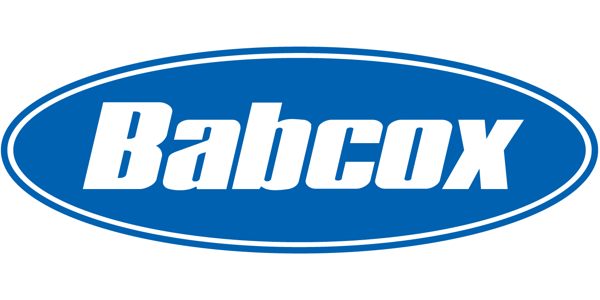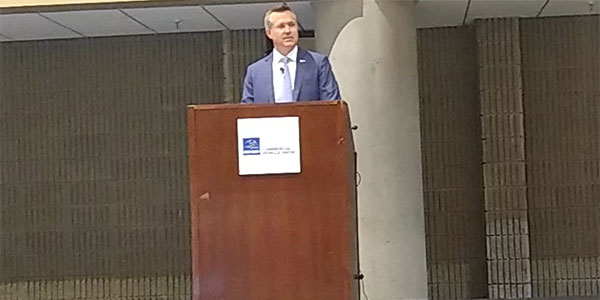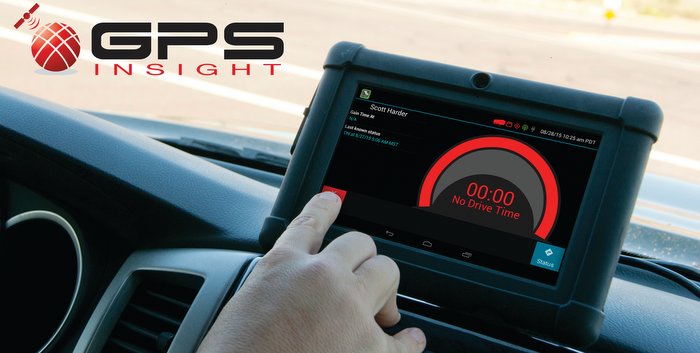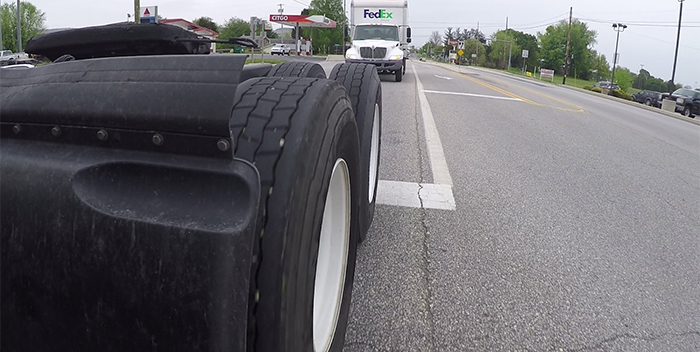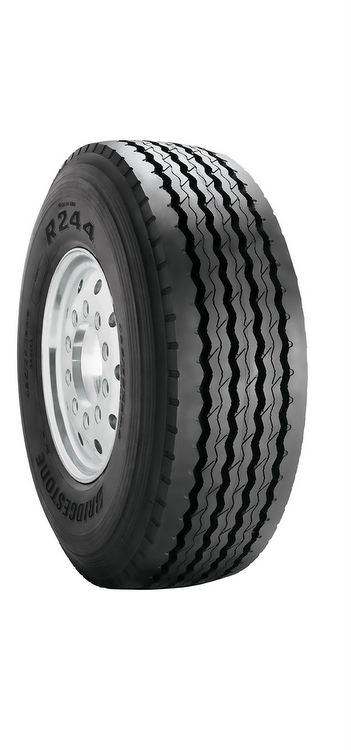Progress in data communications and vehicle reporting maintenance standards have been impressive, according to executives reflecting on some of the recent accomplishments of the Technology and Maintenance Council (TMC) of the American Trucking Assns. as it celebrates its 50th anniversary this year.
“All the TMC study groups and work groups provide ongoing feedback to suppliers about their products and services,” says Carl Kirk, executive director of TMC. “This continuing dialog helps suppliers improve the reliability of their products.
“Fifty years ago the emphasis of this organization was on turning wrenches and maintaining equipment,” says Kirk. “These days a truck is a rolling asset and a rolling communications device. For example, the progress of the data communications task force, which is working on bringing many efficiencies to the industry, is emblematic of the progression of the council.”
TMC’s wide-ranging influence extends from trucks on the road to maintenance practices in the shop. Relating to trucks, the on-board recorder protocol work is impressive because it’s designed on an open platform and does not restrict different technology, he says.
And in the shop, the vehicle reporting maintenance standards have brought consistency to coding, which have allowed fleets to achieve great efficiencies, he says. Part of that is through strides made in cross-referencing supplier codes.
An example is how one supplier worked with the industry on the trailer tracking interface standard, which was developed by a group of software and satellite communication providers, according to Kirk.
“The trailer tracking interface lowers the cost of developing software for manufacturers, so they don’t have to write an interface between each system,” Kirk says. “It also speeds up adoption and lowers costs to fleets.”
TMC has evolved from a user group that focused on maintenance in the 1950s to recommended practices (RPs) and specifications in the 1970s, according to Robert Braswell, technical director of TMC. Those issues have become more complex, as have the electronic components that go into the trucks.
“Now we are doing RPs on things such as thermal printing specs for linerless labels and trailer tracking interface standards between on-board and off-board technology, from the back office to the vehicle in the field,” he says.
The biggest accomplishment in the last year was creating the Professional Technician Development Committee (PTDC), a committee dedicated to fostering and improving commercial vehicle technicians, according to Braswell.
“It created a new membership category for technicians, so they can join the council,” he says. “It also introduced a national technicians skills competition, called TMCSuper-Tech, which debuted in 2005 in Valley Forge, Pa., and will be held in Austin, Texas, in September.
“This is the first time a technicians’ contest has been conducted by an association to demonstrate skills at a national competitive contest,” according to Braswell. “We hope all 50 states will launch state contests and send their champions to TMC’s national competition.”
The new membership category has attracted about 200 technician members, according to Janet Howells-Tierney, director of council development for TMC.
“Many technicians are young and energized and looking for something to be a part of,” she says. “They are excited about the competition we have in the fall, and their membership has helped to increase our ranks. In fact, some fleet maintenance managers are finding out about us through their technicians.”
TMC evolution
The TMC has grown from an equipment organization to one that focuses on transportation processes, according to Kirk.
“Certainly TMC is still about maintenance, but it’s also about transport productivity, which affects many things in the supply chain,” he says. “Carriers that look at the truck, information processing, monitoring drivers’ behaviors and all the other things in the chain will have an enormous advantage over those that look at a truck simply as a transportation device.”
For example, when the on-board vehicle electronics study group was launched in the mid 1990s, many TMC members questioned if the organization should be involved with it, Kirk says. Twelve years later there is no doubt that the organization made the right move by tackling the topic, he says.
“We are looking for that same sort of thing to happen with a new task force on telematics and off-board vehicle data communications that we will launch in 2006.” Telematics deals with on-board component communication.
Future Truck Committee
New road clearing chemicals, standardization, improved fuel efficiency, trailer productivity and life cycle costs are issues on the plate of The Future Truck Committee. For example, the committee’s corrosion task force developed a position paper asking states to discontinue the use of magnesium chloride, a corrosive road-clearing material.
“As a new road chemical, it’s very damaging to equipment and roads,” says John Sullivan, vice president of maintenance and purchasing for Performance Transportation Services and chairman of the Future Truck Committee study group. “We’re working with OEMs and component manufacturers to see what they can do to mitigate those problems. We’ve also asked the chemical community to come up with something the states can use that is just as effective but not as harmful to equipment.”
Also, the committee is working with regulating bodies to ensure there is standardization among regulations, such as SAE databus issues, which allow for the universality of connectors, he says.
“Previously, if you had five different trucks you had five different connectors,” Sullivan says. TMC has long tried to achieve uniform systems allowing for easier installation and maintenance procedures.
Bob Flesher, managing director, vehicle maintenance, FedEx Ground and first vice chairman of the Future Truck Committee, says the committee’s trailer productivity task force group is examining tractor-trailer aerodynamics as one unit and trying to achieve improvements in fuel economy.
“The tractor and trailer OEMs seldom work together as one unit to collectively come up with a combined tractor and trailer solution of improving fuel economy by reducing wind resistance,” Flesher says.
The committee is examining trailer productivity and life cycle costing.
“We want to encourage a more creative engineering environment as it relates to trailer payload improvements, he says. “We want to challenge the trailer OEMs to design higher payload capacity trailers by working together with the task force to achieve this through performance standards rather than the standard “cookie-cutter” trailers being built today.
“Fleets still want “smart trailers” designed that will give reduced operating costs per mile,” he said. “Some of the needed improvements are better air and electrical coupling connectors, reduced electrolysis, increased rust protection, and improved methods of inspecting brakes accurately and in a repeated manner with validated readings.”
Engines
The 2007 and 2010 engine changes along with the new fuel formulas present challenges for the engine study group, according to its chairman Ron Szapacs, equipment specialist, power vehicles, Air Products and Chemicals Inc.
“There are many new controls in the ’07 EPA-compliant engines that will require additional sensors,” Szapacs says. “We are updating RP 316A to list all sensors, what they control, and how to monitor, troubleshoot and repair them.
“The new engines will require a diesel particulate filter (DPF) that is larger than the standard muffler. This will affect the ability to install various auxiliary components, such as power take off pumps and compressors. The DPF also will require special maintenance to ensure it is operating correctly. These engines will have additional ECM programming features that fleet managers will need to understand to program the vehicle and engine to operate at peak efficiency.” There will be a full technical session at the 2006 TMC annual meeting to address these issues.
“There will be lots of unknowns related to the EPA-2010 compliant engines that we need to know how to address,” he says.
Biodiesel fuel and ultra-low sulfur diesel (ULSD) fuel will affect the 2007 engine, he says.
There is pressure to get the industry to use a 10 percent to 20 percent mix of biodiesel fuel, which is made from natural substances such as vegetable oil or soybeans, or animal-based biodiesel. The TMC is developing an RP that will recommend 10 percent biodiesel fuel, Szapacs says.
“We may be able to increase percentages over time, depending on feedback,” he says. “We don’t know what maintenance issues it will create, such as blocking injector tips, storage and cold flow issues. Biodiesel fuel will help subsidize the shortage of diesel fuel, and it could be a less expensive option to some fleets in the Midwest that have easy access to soybeans.”
Regarding ULSD fuel, sulfur is a lubricant and without that in the fuel, some components in the fuel system may suffer, especially in older diesel engines, Szapacs says.
“The byproducts of combustion end up in the crankcase and create sulfuric acid. With less sulfur in the fuel, you will need less ash to neutralize the sulfuric acid in the engine oil. With this oil reformulation, what effects will we see on older engines? We are working on an RP for ULSD specs that can be used when ordering ULSD fuel.”
|
Networking, education, strength in numbers are benefits to TMC members Oren Summer, president and chief executive officer, FleetNet America LLC and a director-at-large of TMC: “The camaraderie created between suppliers and users in the industry has allowed for thousands of accomplishments to surface and be addressed. For example, the ABS liaison supplier manufacturers recommended practice and standards resulted in savings to the industry by allowing the use of a single connector between the truck and trailer.” Jack Sukala, president, J. Jeb Products LLC and a director-at-large of TMC: “TMC brought together a diverse group of manufacturers and users in a working organization for the betterment of the industry. It opened lines of communications that were not previously open, which resulted in improved equipment. It also helped establish a common language used by engine manufacturers. Terms that had been proprietary became part of a common language.” Steph Sabo, maintenance manager, Norrenberns Truck Service and chairman on the fleet maintenance management study group: “The ability to easily network with peers, suppliers and associates is the No. 1 advantage of TMC. The knowledge gained by sharing information on repair practices and procedures is invaluable.” Lew Flowers, manager of vehicle maintenance, Oklahoma District, United States Postal Service and a director-at-large of TMC: “If I have a maintenance problem with a specific supplier, I have ready access to that supplier through TMC. I’m not talking about a local or regional salesman, but somebody at a higher level. The recommended practices are a very important part of TMC. They recognize problems and come up with ways to solve them before the product gets out.” John Sullivan, vice president of maintenance and purchasing, Performance Transportation Services and chairman of the future truck committee study group: “TMC benefits companies and attendees with the education they get through the study group and technical sessions that are presented. Also, you can talk with other fleet managers and executives from across the country about how they deal with maintenance issues you are experiencing. I measure the value of a meeting by what I can take back to my company and implement immediately to increase productivity, become more efficient or reduce costs.” Ron Szapacs, equipment specialist, power vehicles, Air Products and Chemicals and chairman of the engines study group: “TMC is powerful because when all the large fleets get together and have the same basic issues they are trying to resolve, that gets component manufacturers to listen and respond and provide a component that works better and lasts longer. The manufacturer’s rep sees all those people and the number of units represented and gets highly motivated. It’s hard to wield that kind of influence as an individual company.” |

